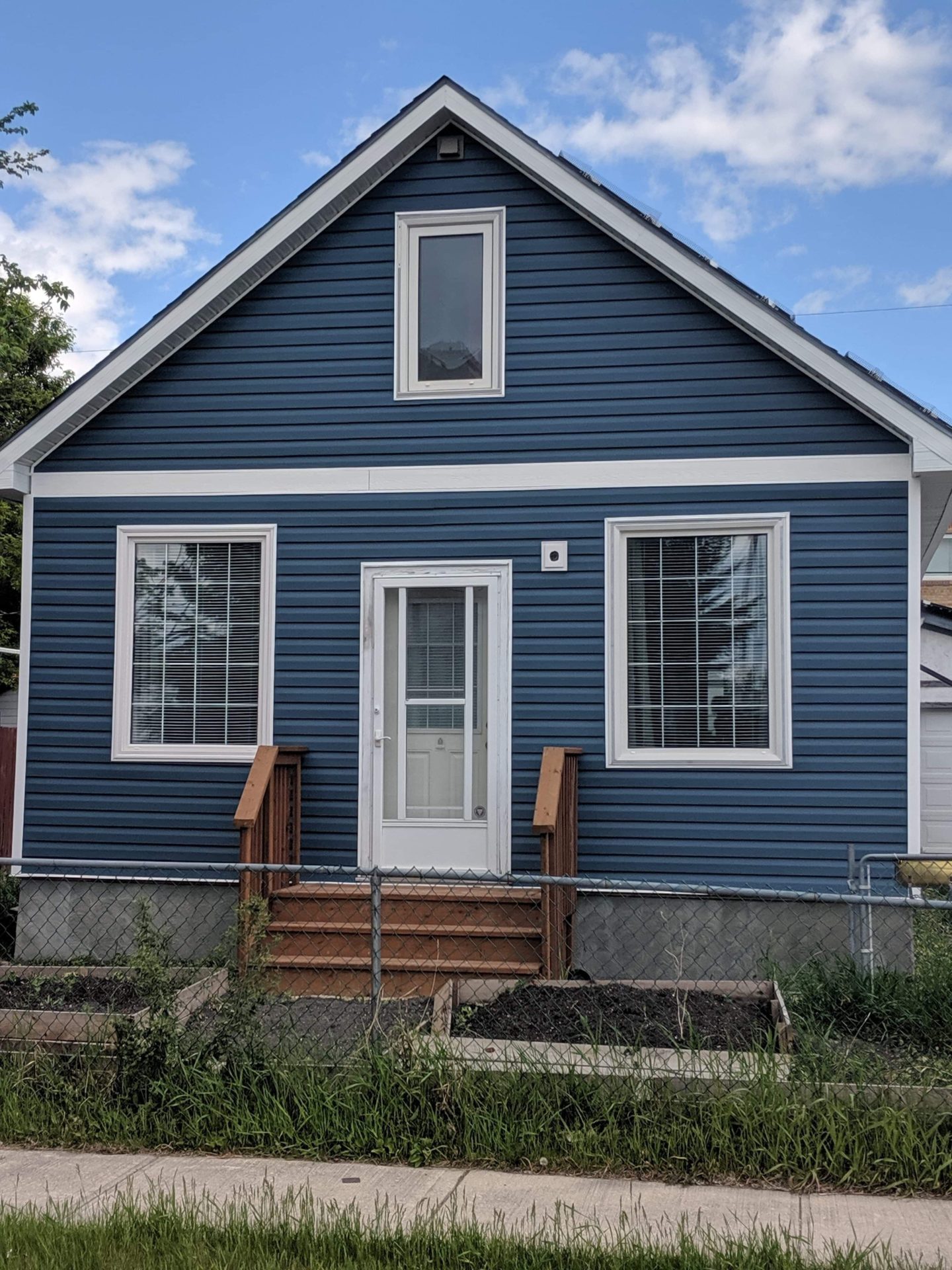Vinyl Siding
Posted on |

If you’re thinking of new siding, you’re in for a treat — and a conundrum. Your choice will likely be a major upgrade in your home’s appearance — that’s the fun part. Few home improvements or repairs can enhance the performance, curb appeal, and value of your house like new siding. Careful homeowners do their homework before choosing exterior siding for their new or renovated house. The advertisements for vinyl siding seem so enticing — the prospect of never having to paint your home is a tempting argument for the busy parent or hard-working family. A lifetime of no maintenance seems like a dream. Unlike pine board or cedar, this durable plastic will not rot or flake. Vinyl is available in several dozen colors and can mimic architectural details that were once made from wood. It’s no wonder that vinyl has become one of the most popular siding material in Winnipeg and is quickly gaining momentum around Canada.
Vinyl siding is tough and comes in a boatload of colors and textures. Because the color is throughout the material, nicks and scratches don’t show up. Sophisticated manufacturing techniques create products that do a surprisingly fine job of mimicking wood-grain lap siding, wood shingles, and even stone. Vinyl siding is lightweight and, in many instances, can be installed directly over existing materials, so it’s a good retrofit option. Because it’s easy to handle, vinyl installation can be installed quickly, saving labor costs.
Vinyl siding is the most common exterior cladding in most houses in Winnipeg. And why wouldn’t vinyl siding this popular? It’s durable, low-maintenance, and all-around attractive. Vinyl siding is easy to clean. You don’t even have to hire a professional or buy a power washer. It just requires a little time, elbow grease, and cleaning materials — most of which you already have in your home or garage.
Durability. Advertisements often imply that vinyl siding is permanent. It is true that vinyl will last a very long time—that’s why it is so difficult to dispose of it safely. In extreme weather, however, vinyl without chemical additives is less durable than wood and masonry. Titanium dioxide is often added to the chemical mixture to block UV rays, which deteriorated older vinyl siding. Consumers can purchase different grades of vinyl, both recycled and what is called “virgin,” and different thicknesses are available. The installation also affects its durability—because it expands, it must be installed loosely, but if it’s too loose, wind can get underneath the thin sheets of vinyl siding and lift a panel from the wall. Windblown debris and strong hail can puncture vinyl. Thicker vinyl poses challenges during installation, as the vinyl pieces are usually overlapping. New developments have made vinyl stronger and less brittle, but the plastic sheets will still crack or break if struck or pulled at by a lawnmower or snow blower.
Maintenance. Vinyl requires no paint, but most can be painted. To maintain its fresh appearance, vinyl siding should be washed every year. Any wooden window sashes and trim will still require routine painting, and ladders leaning against the house can scuff or crack the vinyl siding. Vinyl is available in more colors than ever before, and new vinyl siding does not fade as quickly as older vinyl. Also, the pigmentation is baked through instead of applied to the surface, so vinyl won’t show scratches. Look at both sides of the siding, especially recycled products, to ensure that the color is not simply on one surface.
How much does it cost to put new vinyl siding on your house?
Turn to All Weather Exteriors for your vinyl siding installation or replacement project. When it’s time to replace your siding, contact All Weather Exteriors at (204) 510 -2959 or schedule a consultation online.
Leave a Reply Cancel reply
You must be logged in to post a comment.

One Comment